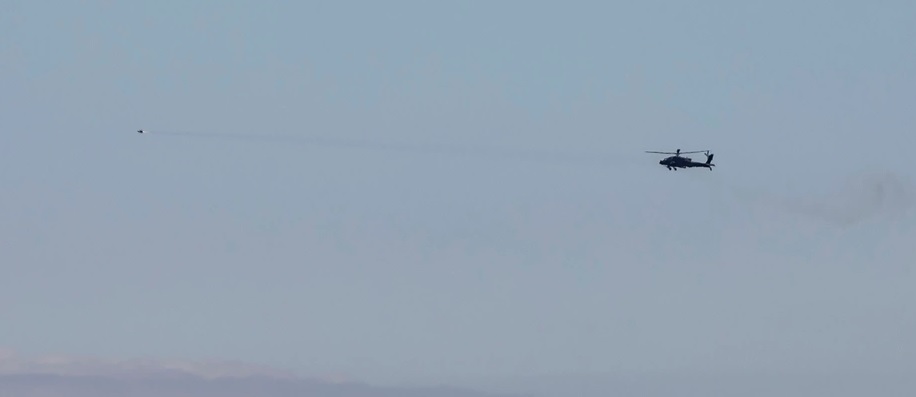The US Army will integrate the Israeli Spike NLOS missile into the arsenal of its Apache helicopters
The US Army integrated and extensively tested the Israeli Spike NLOS air-to-surface missile on one of its Apache attack helicopters, with the intention of soon incorporating it into its arsenal.
The integration and live-fire tests were conducted at the U.S. Army’s Yuma Proving Ground (YPG). Tests were conducted there in support of an airworthiness authorization that will allow the Spike non-line-of-fire missile to be integrated on the AH-64 Apache attack helicopter.
Always identified with state-of-the-art sensors and precision guidance systems, as well as lethal air-to-surface missiles such as the Hellfire, the Apache will now have a precision weapon with more than four times the range of the flagship missile.
“Our plan is to field next summer. “We are going rapidly from this culminating test event to fielding. It is an awesome capability that I think will be a game-changer.”, said Maj. Brian Haley, Assistant Product Manager for Program Manager Apache
Over the course of five days in December 2023, experts fired eight complete projectiles in a variety of demonstration scenarios at the test range: day and night firing, against both moving and static targets, such as a simulated SA-22 (Russian Pantsir anti-aircraft system) and a real Dodge Dakota truck, at different distances, from close glides to more than 30 kilometers away.

In more than one fire, the Apache dropped down in altitude and even turned 180 degrees as the missile sped toward its target to intentionally lose link with the round to verify it would still hit the target on its automatic track: the link was reestablished before impact in one test, intentionally not reestablished in another.
The SPIKE missile is also able to disable the warhead mid-flight, and one test verified this, hitting a target board like a slug. The test included acoustic sensors to gather sound data on its impact.
“The flight restriction algorithm on the SPIKE is pretty robust.” “It has an intended and expected flight area, and when it leaves that expected flight area it induces a roll to land within the surface danger zone.”, said Cole Sutter, YPG test officer.
LRPM Program
The US Army is pursuing a program to acquire a new long-range precision munition (LRPM) to arm its future reconnaissance and attack helicopters (Future Long Range Assault Aircraft (FLRAA) and Future Attack Reconnaissance Aircraft (FARA), as well as for the AH-64 Apache helicopter fleet modernization plan (Upgraded Apache E or V6.5 version).
While the Spike NLOS is being evaluated as an interim solution until the LRPM program is finalized, all indications are that it is firmly installed among the final candidates to win it.
Spike NLOS
Developed by the Israeli firm Rafael and marketed in the United States by Lockheed Martin, the Spike NLOS (Non-Line-of-Sight) is a multi-purpose, electro-optical/infrared guided, long-range tactical weapon for air, ground and even naval platforms.
Its advanced rocket engine allows it to reach distances of up to 32 kilometers. Thanks to its advanced guidance system and secure data link, this missile can engage distant or geographically hidden targets without direct line-of-sight, while the operator receives real-time video images and man-in-the-loop control throughout the missile’s flight. In this way, operators have the ability to modify or abort the mission while en route to the target.


Para comentar, debés estar registradoPor favor, iniciá sesión